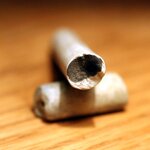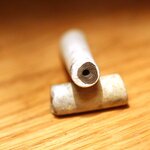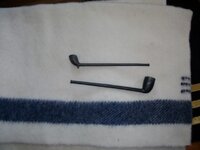steelheadwill
Gold Member
- Jan 2, 2010
- 6,689
- 715
- 🥇 Banner finds
- 1
- Detector(s) used
- Brain eyes ears and nose
- Primary Interest:
- Other
Have found a lot of pipes & stems, this is my first with the black core,
anyone know the reason, or seen one before?
Thanks for looking! & HH. herbie
anyone know the reason, or seen one before?
Thanks for looking! & HH. herbie






![DSCN0601[1].JPG](/data/attachments/374/374375-f66c58675db21e5e7f644d5acb0e6a76.jpg)
![DSCN0601[1].JPG](/data/attachments/374/374387-f66c58675db21e5e7f644d5acb0e6a76.jpg)



![000_0001_00[1].jpg](/data/attachments/431/431378-f14f9b92f18145a33a0759365141f072.jpg)
![000_0001_00[1].jpg](/data/attachments/434/434469-0b3b4c999dc70a592a346b6d9270ab74.jpg)
![000_0002_00[1].jpg](/data/attachments/434/434510-d74bdc384de599343aa1c9e0ca361967.jpg)
![securedownload[2][1].jpg](/data/attachments/434/434519-0218e03f58bc34b33d0444ec37570f38.jpg)
![resize[1].jpg](/data/attachments/434/434528-46db2fedb3ee64ff471f06693ee2f68c.jpg)
![000_0006[1].jpg](/data/attachments/434/434599-9167cd9219b97ed084e826ef31aaf1a9.jpg)
![000_0007[1].jpg](/data/attachments/434/434606-bacf4a497b4809e8a3b9df91b7f9c780.jpg)


